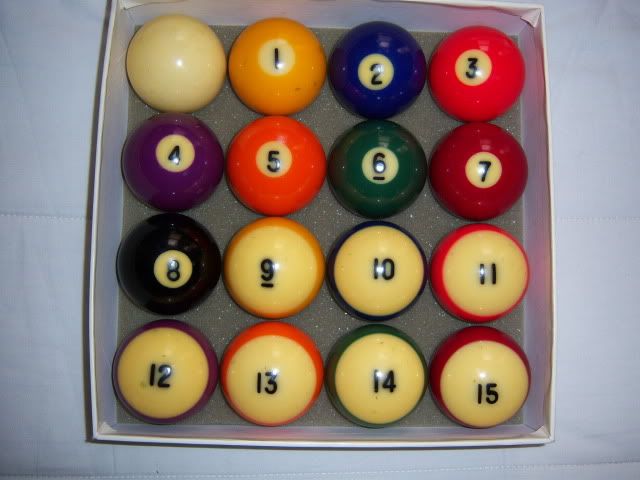I have a dilema with my balls....billiard balls that is. Someone gave this set of balls, and told me that they are bakelite. I think he just said that, because he saw a set that looked similar being sold as bakelite. They came from a table he bought. The table is a 1979 Brunswick. Do not know the age of the balls. Before I sell the set, I would like to know what they are made out of, or at least rule bakelite in or out. I read about some test you can do on bakelite. Has anyone had any luck with these tests or know which one would be the best for billiard balls? Or if someone could help me out by just looking at the balls would be great. Thanks!
Someone gave this set of balls, and told me that they are bakelite. I think he just said that, because he saw a set that looked similar being sold as bakelite. They came from a table he bought. The table is a 1979 Brunswick. Do not know the age of the balls. Before I sell the set, I would like to know what they are made out of, or at least rule bakelite in or out. I read about some test you can do on bakelite. Has anyone had any luck with these tests or know which one would be the best for billiard balls? Or if someone could help me out by just looking at the balls would be great. Thanks!




Last edited: